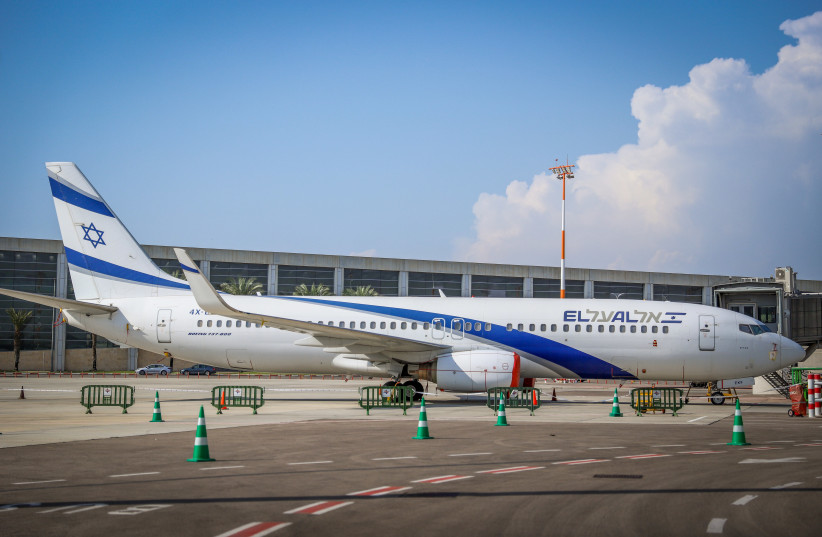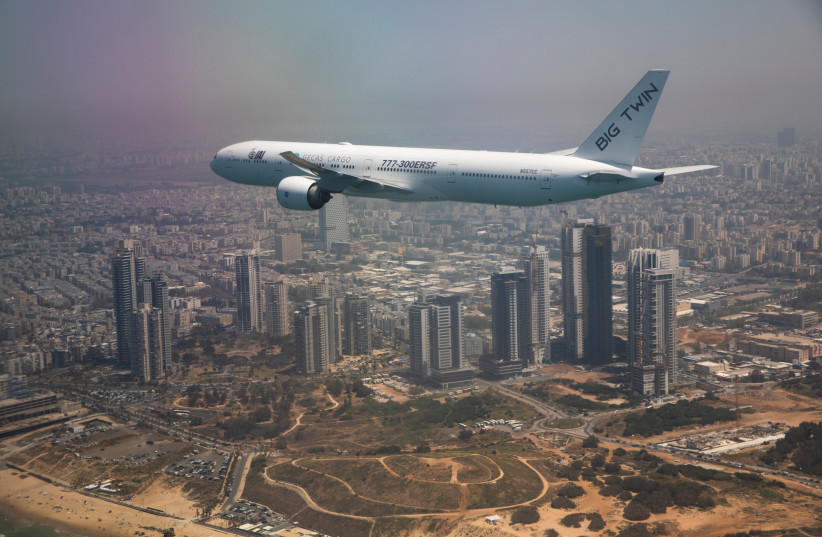According to recent reports, Israel may soon join the club of countries whose citizens can fly to the US on the US Visa Waiver Program, if the Israeli government meets certain requirements.
While most Jerusalem Post readers may not be affected by any change in the visa policy, the airlines that fly most frequently between the United States and Israel could see a substantial increase in traffic originating from Ben-Gurion Airport, were such a monumental policy change to be enacted.
Which naturally leads one to ponder how airlines plan their long-term policies on adding new cities as destinations.
They look at the competition, passenger demand forecasts, hub connectivity and finally aircraft availability. Here are the four key considerations that an airline must make while both tweaking existing routes and planning new ones.
Matching the competition
Opening a new route that is already flown by another air carrier is not unusual, since there are thousands of airlines operating in the world.

The route between New York and Tel Aviv is flown by many airlines multiple times a day. Starting this route would be a challenge for an airline. American, Delta, United along with El Al airlines offer a multitude of nonstop flights between JFK or Newark Airport and Ben-Gurion Airport.
Flying to another city with no airline competition might be a better option.
Consider American Airlines’ decision to commence with nonstop flights from Dallas to Tel Aviv. No airline had ever flown from the Lone Star State to the Holy Land. No doubt, major research was done calculating the interest that such a route could generate. A large number of Evangelicals reside in the area who do fly frequently to Israel. American Airlines can feed its flights at this hub with connecting passenger traffic. It opens up traffic not only from the Southwest but all of South America, where American has a large presence.
American was initially supposed to launch Dallas to Tel Aviv flights as of September 2020, but the pandemic caused American to rethink that timeline. The route was then delayed by over a year, through October 2021. Then it was delayed through January 2022. Then it was delayed through March 2022. Then it was delayed through May 2022. Now it has been canceled outright with an anemic press release: “Due to soft demand, we’ve made the difficult decision to cancel the planned service between Dallas and Tel Aviv.”
The eyes of Texas may have been shining on American Airlines, but nonstop flights have been canned. So much public relations and goodwill was washed away.
Demand forecasting
Before starting a new route, airlines want to know how many passengers will travel on their flights.
Most airlines use aviation market intelligence tools to parse and analyze all available data – data from within the airline itself, as well as industry-wide passenger data that identify trends in traffic.
Essential data points to consider are fares, routes, airlines and connections. Airlines deploy this data to determine how many passengers are traveling each day, including connections, between airport pairs.
These demand forecasting tools need to have long- and short-term planning functions. As a result, the sector can devise long-term business plans as well as respond to immediate issues. Many airlines and airports forecast short-term demand based on anecdotal evidence and experience. This approach tends to lack accuracy.
By knowing the average traffic flow per day, airlines will determine which type of aircraft is most suitable for the route. An airline will definitely not start a route and fly a Boeing 777 where there are only a few passengers traveling every day between point A and B. It would simply not make any sense to operate an aircraft of such capacity.

El Al, in its infinite wisdom, announced last summer that it planned to launch direct flights to Melbourne and Tokyo. Both lacked any direct flights, so the news generated an incredible amount of interest. Until this announcement, the vast majority of passengers from both destinations had a lengthy journey and were forced to switch planes in a myriad of airports – Bangkok, Dubai, Hong Kong and Istanbul, to name the four most frequent hubs.
As summer turned into fall and now into winter, the paucity of flight information to Melbourne was alarming. No doubt, the El Al flights would soon be uploaded into the Global Distribution System. Now already nearing the end of winter, El Al’s spring and summer schedules still show no flights to Down Under. Tokyo flights, on the other hand, are being promoted heavily and will commence next month.
Unofficial representatives at El Al simply shrug their shoulders, stating that if you don’t see it, it ain’t happening. No announcement was made, leaving the travel community at a loss as to El Al’s intentions. People planning trips to Down Under continue to ask, When will El Al start its flights? My educated guess is not until 2024.
Connectivity at the hub
Many international airlines have a single hub airport – El Al, Singapore Airlines and Cathay Pacific are good examples. Most of the US airlines use a spoke-hub network to route their plane traffic.
The words “hub” and “spoke” create a pretty vivid image of how this system works. A hub is a central airport that flights are routed through, and spokes are the routes that planes take out of the hub airport.
Airlines claim that hubs allow them to offer more flights for passengers. The job of the network planning team at an airline is to ensure that most passengers will be able to go to the destination of their choice in the airline’s route network.
It is one of the fundamental reasons that American proudly announced in the middle of the pandemic that it was going to compete with El Al’s nonstop flight to Miami with a thrice-weekly flight of its own. Tel Aviv may not be the most premium market, but demand is strong, and therefore it was no surprise when American Airlines announced it would launch service from Miami to Tel Aviv. In June 2021 it began flying to Miami and connecting to dozens of cities both in North and South America. As the world returned to normal travel patterns, the route became so successful that just last October, American announced it would be a daily service, which typically indicates the route is performing well.
Offering service in economy, premium and business classes, the route drew US and Israeli citizens like moths to a flame. Did American undercharge the flights, forgetting that the traveling public was clamoring for such a product? Probably, but this should have been adjusted.
Surprisingly, though, American Airlines downgraded the route from a Boeing 777-200 to a Boeing Dreamliner 787-800, which features only 20 seats in business class. Business class seats are where airlines make the most profit.
Instead, out of the blue, with no consultation with anyone in the travel profession, American announced a complete cessation of the service from next month.
Unfortunately, American isn’t providing much of an explanation for this cut, aside from its banal statement informing clients that, come March 24, they can kiss their nonstop flights goodbye. This is likely to irk some travelers who booked this flight with the confidence that it would continue to operate on a daily basis – especially when an executive was so publicly bullish about its prospects.
My conjecture is that American Airlines noticed that fares over the last years have been overly attractive. Without quantitative data, my hunch is that it saw the expansion by Delta, United and El Al and decided it could pivot its aircraft to other markets.
This is not the first time that American has done a quick retreat from Israel. It once flew to Philadelphia, but, like with Miami, it also axed flights to the City of Brotherly Love.
For now, American insists that it will continue with its daily flight to JFK, and I truly want to believe it, but am a bit cautious on putting all my chips, or my clients’ behinds, on its aircraft.
Aircraft availability
An airline will have to source an aircraft when deciding to fly to a new destination. A major airline with a large fleet of aircraft might be able to find a spare aircraft and assign it to the new route. In the post-pandemic world, it is a combination of both having the fleet as well as having the pilots to operate it.
For an airline to pull an aircraft from its fleet for a one-hour domestic flight is easier than for a 15-hour international flight. A regional aircraft might fly four to five flights a day to different cities, while a wide-body airplane might fly only once a day on a 10-hour overseas flight.
Delta Airlines has decided that in addition to its flights from Tel Aviv to JFK and Boston, come spring, Delta will resume nonstop flights to Atlanta, where it is headquartered with dozens of flights to additional destinations.
From April 16, Delta will be flying 13.5 hours daily to Miami. Flying an Airbus 350, it will offer clients seats in economy, economy comfort, premium and business class, which has earned rave reviews.
Some airlines love the razzle-dazzle of promotions highlighting their new routes. They often get the mayor of the city that is getting the new flights to be present at the press conference when the news is made. Unfortunately, when the route is canceled, it usually happens with the least amount of publicity. Most of the flying public is not even aware of Delta’s new route. Perhaps, as we get closer, the airline will incorporate more pomp and circumstance.
Yes, airlines provide a vital service, but factors including the continuing existence of loss-making carriers, bloated cost structure, vulnerability to external events and a reputation for poor service combine to present a huge impediment to profitability.
Long lines due to security procedures at check-in, cramped seating, inconvenient schedules, poor service – the list of airline travelers’ complaints is a lengthy one. The perception that air travel is an ordeal makes it very difficult for airlines to charge the higher prices that are necessary to return to profitability.
There is an art to flying. The knack lies in learning how to throw yourself at the ground and miss.
The writer is the CEO of Ziontours, Jerusalem, and a director at Diesenhaus. For questions and comments email him at mark.feldman@ziontours.co.il
